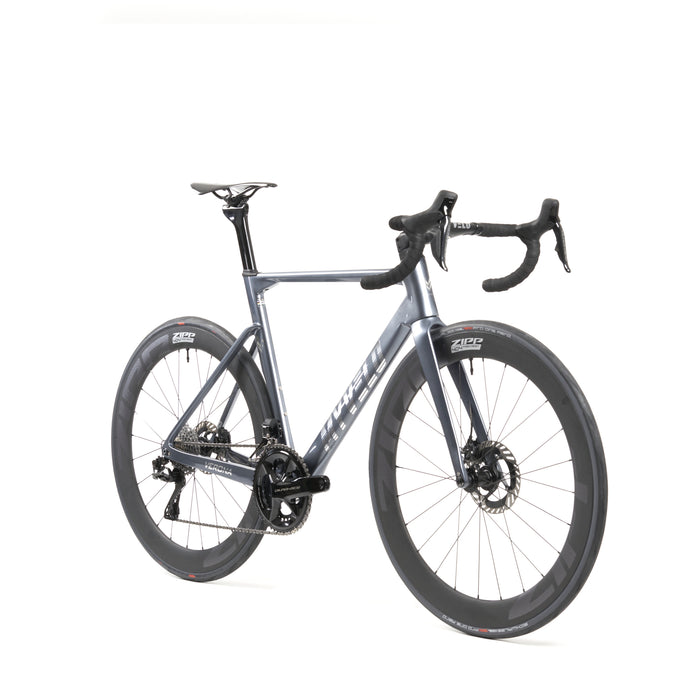
Verona road bike
incl. FREE shipping & free returns

In endurance sports, it is not only the absolute performance that counts, but above all the efficiency with which this performance is achieved in relation to body weight.
The indicator watts per kilogram (watt/kg) at the threshold is one of the most important metrics for objectively evaluating one's own performance level - be it in cycling, running or rowing.
Von Björn Kafka |
2 minutes read time

The threshold, also called functional threshold power (FTP ), describes the highest power output that can be sustained over a period of approximately one hour without fatigue setting in. Watts/kg relates this power output to body weight and provides a number that allows different athletes to compare.
Example:
Two cyclists have an FTP of 300 watts.
Despite the same absolute power, athlete A is more efficient because he produces more power per kilogram of body weight.

| Watt/kg at threshold | Level (cyclists) |
|---|---|
| < 2.5 | beginner |
| 2.5–3.5 | recreational athlete |
| 3.5–4.5 | Ambitious amateur |
| 4.5–5.5 | Semi-professional |
| > 5.5 | elite |
This table varies depending on the sport, gender and age, but provides a rough guide.

Although watts/kg is a key metric in endurance sports, it shouldn't be viewed in isolation. Factors such as mental strength, technique, and race tactics are equally crucial to success. Nevertheless, the number provides a clear guide to assessing your own performance level and making targeted progress.
Invest in your training, maintain a balanced diet, and monitor how your watts/kg develop over time – progress is the best motivation!

Wer regelmäßig mit dem Rennrad unterwegs ist, kennt das Ritual: Nach einer langen Ausfahrt oder vor einem knackigen Intervalltraining führt kein Weg am Espresso vorbei. Ob in der italienischen Bar an der Strecke, auf dem Marktplatz nach dem Sonntagstraining oder zuhause aus der Siebträgermaschine – der Espresso ist fester Bestandteil der Rennradkultur. Doch was steckt hinter dieser Verbindung aus Koffein, Stil und Leistung?

Wer an Rennradfahren denkt, hat oft Bilder von durchtrainierten Beinen, kraftvollen Antritten und aerodynamischer Haltung im Kopf. Doch ein Muskel spielt eine unterschätzte, aber entscheidende Rolle: der Beckenboden. Er ist nicht nur für Stabilität und Körperkontrolle wichtig, sondern auch für Komfort, Leistungsfähigkeit – und die langfristige Gesundheit auf dem Rad.

Die Auswahl an Fahrrädern war noch nie so groß wie heute. Rennrad, Mountainbike oder doch ein Gravel Bike? Jedes dieser Bikes hat seinen eigenen Charakter, seine Stärken und idealen Einsatzbereiche. Doch wo liegen die Unterschiede – und welches Rad passt am besten zu Dir und Deinem Fahrstil? In diesem Artikel erfährst Du, was die drei Bike-Typen auszeichnet, welche Vor- und Nachteile sie haben und worauf Du bei der Entscheidung achten solltest.